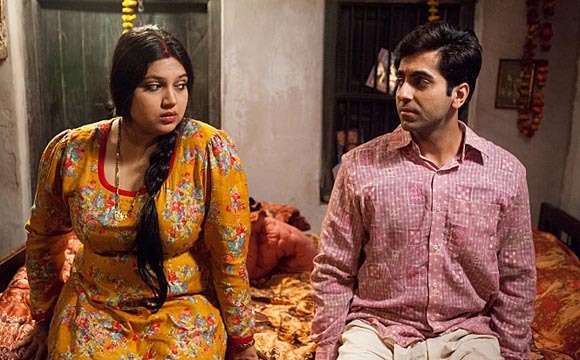Body shaming might sound like a new fad, but in all honesty, most of us have been subjected to this while growing up. Despite living in a time and age which strongly endorses women empowerment, these stigmas mostly surround the women in our society.
So in case you’re a bit lanky, they’ll force feed you deshi poneer with the hopes that someday you’ll gain a pound or two; if your skin’s rich in melanin, they’ll slather generous amounts of fairness creams to make a point that ‘if you ain’t white, you ain’t right.’ And if you turn out to be chubby or overweight, you’ve committed a cardinal sin.

It’s no surprise that for a Bangladeshi woman, who is slightly on the heavier side of the scale, growing up isn’t just a challenge, it’s a stigma; especially when you’ve got elders and peers pressuring you to fit into the ‘forsha,’ ‘shukna’ and ‘shundor’ boxes. It doesn’t matter if you’re large from consuming the calories or you have a genetic condition, as long as you pack a few extra pounds, you’re never considered beautiful. In addition to that, you’ve got media and pop culture crafting sexualised images of women especially in Bollywood; hence you can easily comprehend why plus sized actresses rarely graced the silver screen in a lead role, let alone in an item song. Simply put, the standards of beauty in media come down to whether or not you’re a 36-24-36.This results in the perfect recipe for insecurities cropping up during our early teens, which we eventually carry forward to our adulthoods.
Eventually, words like healthy and chubby are suddenly overshadowed by the word ‘FAT;’ and the amount of stress that goes into that word is sure to make anyone of the following body types feel some level of distress. Further down the line, when your ‘fatty’ cells follow you into your preteens, you become the perfect candidate for weight-centric jokes and nicknames. By now you’ve earned several titles; ‘moti,’ ‘haati (elephant),’ and ‘golla (football)’ are a few polite ones in the lot.
As you move towards adolescence, you’re more conscious about your body than before; girls as young as 15 and 16 have suddenly discovered crash diets. While everyone’s trying to jump on the ‘skinny and sexy’ bandwagon in their teens, you’re working up a migraine wondering if you’ll always be ‘THIS?’ Keeping this in view, you make way for emotions like shame and self-doubt to enter your thought process.
Over time, however, the pokes and prods surrounding the extra baggage start hurting a lot less. The years of second guessing yourself do in fact come down to a minimum and soon you learn to accept your body for the way it is. Kudos to you for not hurling your way into adulthood!
The societal jabs however never cease to exist. So if you’re at some wedding standing at a buffet line for your second helping of pulao and roast, you’ll find a flock of very concerned aunties doling out unsolicited advice on why a young girl like yourself should cut back on the carbs; god forbid it scares off potential suitors.
Yes, when a girl comes of age, she must groom herself to be pretty and perfect; and nothing spells ‘perfect’ in South-Asia more than a fair maiden with a petite waist. Unfortunately, when the topic of marriage does come up for women, her physical appearance plays an integral role in it. So if any man were to pop the question, it’s purely based on your BMI!
However, in the wake of mainstream beauty, something else has risen to the surface. Something that we now know as ‘body-positivity;’ and in many parts of the world it is breaking barriers for women. Global brand like Dove, which has been owned by Unilever for 60 years, gained immense popularity through their body positivity campaign #RealBeauty Pledge earlier this year. Everyday women from more than 15 countries within the age group of 11-71 were photographed by Mario Testino. The pledge went alongside Dove’s Self-Esteem Project which continued educating women to recognise their full potentials.
In Bangladesh, a platform named ‘It’s a She Thing’ organised by Bonhishikha addresses the ordeals women in our society have to brave from childhood to adulthood. They have produced thought-provoking stage performances in English since 2015; this year however, it will be played out in Bengali for the first time, under the title Nari Nokkhotro. The show is set to sizzle on August 18-19 and a part of their routine ‘Lokey Ki Bolbe?’ (what will people say?) and will address the age old tradition of body shaming. Details of the program can be found on Facebook at this page titled, বহ্নিশিখা bonhishikha – unlearn gender.
Aside from this, films and media also address the lengths at which women’s health and weight are scrutinised. As a result, our neighbouring country has produced films like The Dirty Picture as well as Dum Laga Ke Haisha. Vidya Balan was lauded for daring to wear ‘risque’ outfits in order to fit into the avatar of South Indian actress, Silk Smitha. Despite being overweight, Bhumi Pednekar bulked up 12kgs to play the part of the chubby Sandhya Varma, opposite a skinny Ayushmann Khurrana.
What’s amusing is that the very media that created unrealistic ideals for women has now made room for the body image they negated in the first place. How does this affect women in Asian countries? For starters, it gives them the confidence to choose their comfort above everything else; it also touches upon the extremities which young girls and women go through in order to mould themselves into one generic body type. After years of criticism, this is the kind of positive reinforcement that is slowly but surely altering our ideas of ‘beauty;’ and from the looks of it, one’s lack of thigh gap has nothing to do with it.
